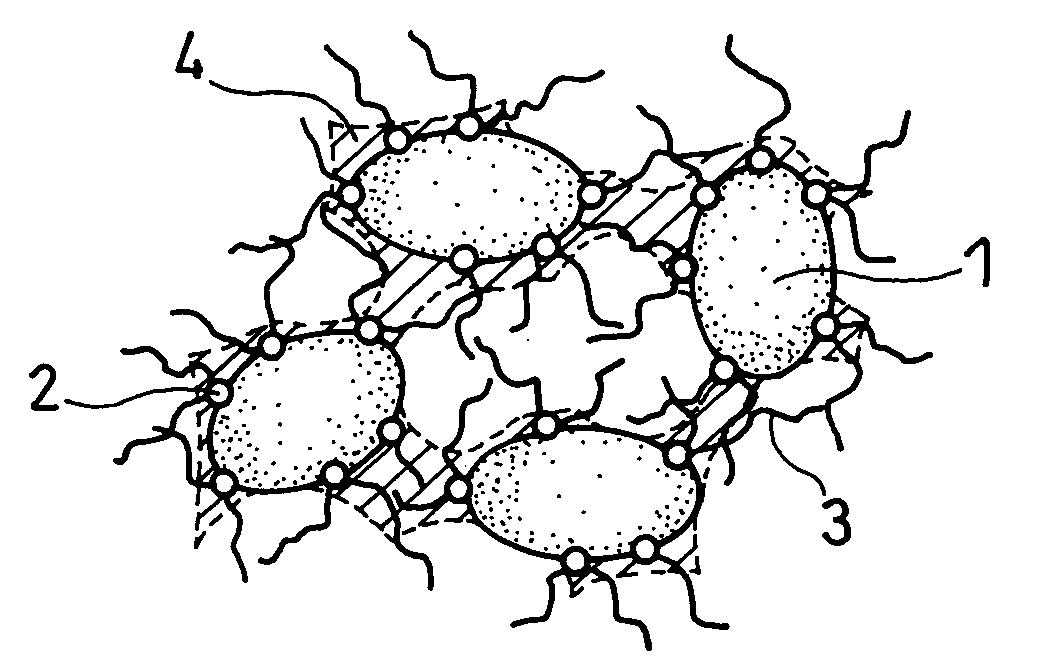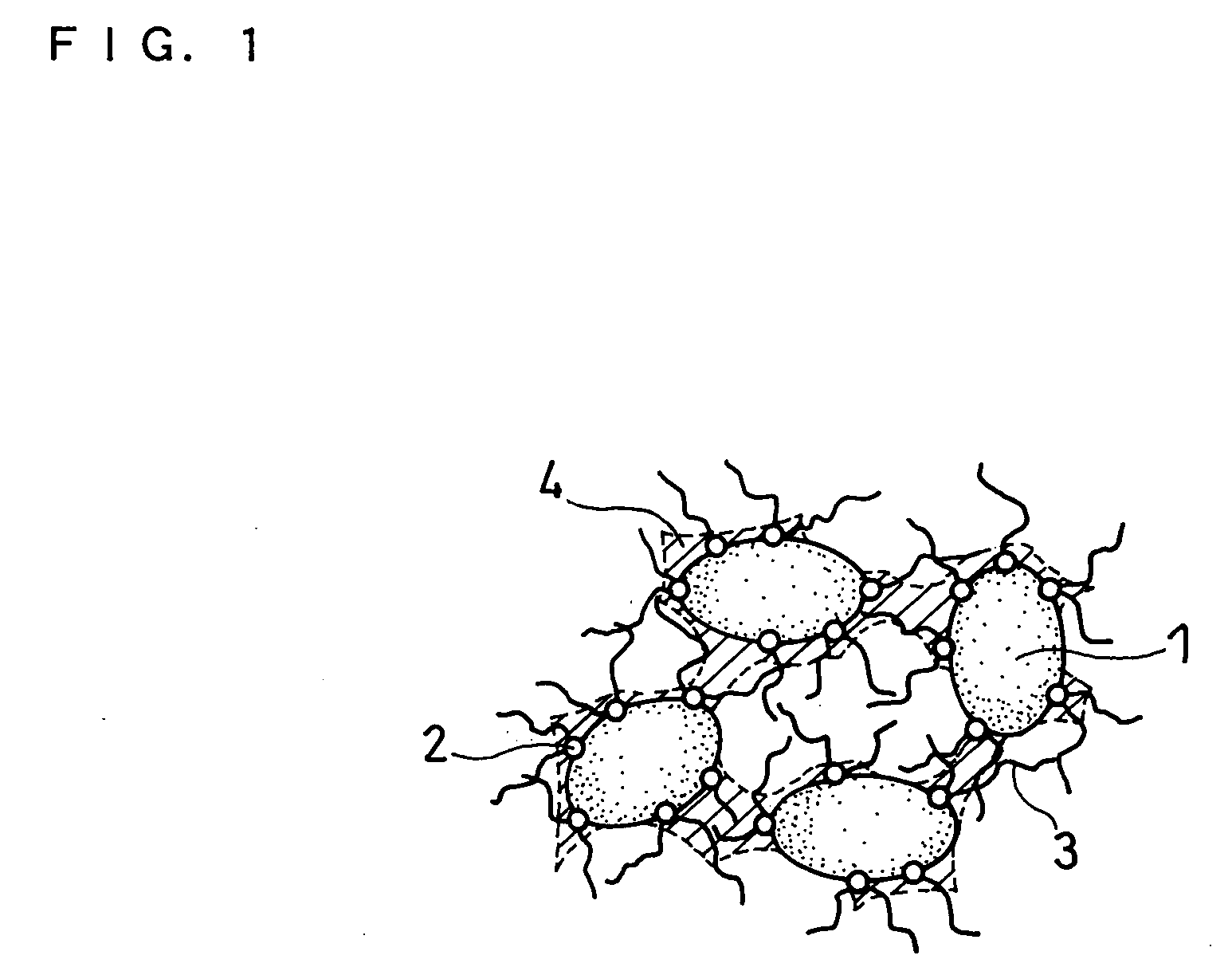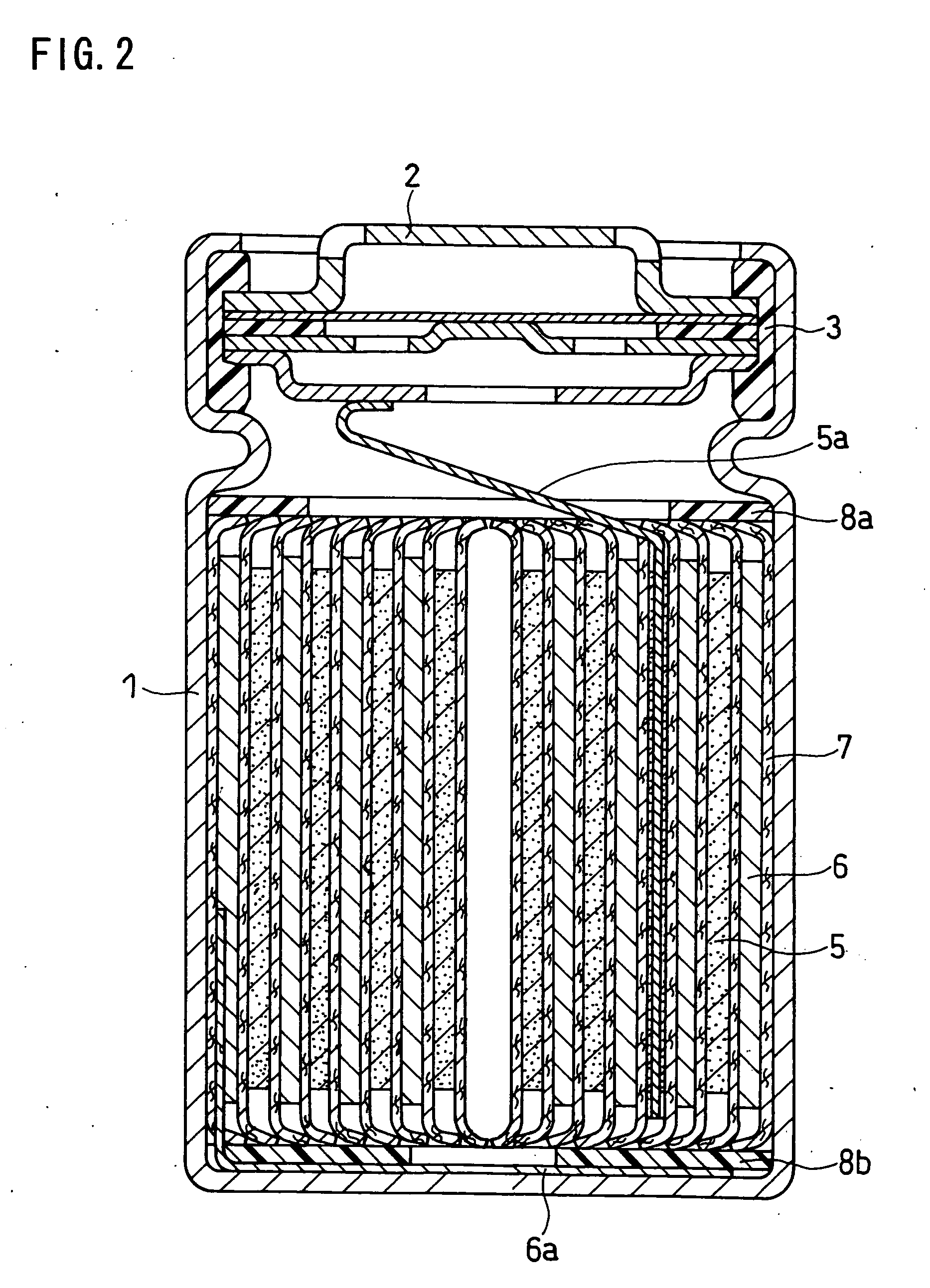Non-aqueous electrolyte secondary battery
a secondary battery and electrolyte technology, applied in the direction of wound/folded electrode electrodes, cell components, sustainable manufacturing/processing, etc., can solve the problems of difficult to further heighten the capacity, large volume changes of materials, small and light weight of electrolyte secondary batteries, etc., to achieve good cycle characteristics and high charge/discharge capacity
- Summary
- Abstract
- Description
- Claims
- Application Information
AI Technical Summary
Benefits of technology
Problems solved by technology
Method used
Image
Examples
example 1
[0061] Silicon monoxide powder (reagent, available from Wako Pure Chemical Industries, Ltd.) was pulverized in advance and classified into a particle size of 10 μm or less (mean particle size 5 μm). 100 parts by weight of this silicon monoxide powder (hereinafter also referred to as SiO powder-1) was mixed with 1 part by weight of nickel (II) nitrate hexahydrate (guaranteed reagent, available from Kanto Chemical Co., Inc.) and a suitable amount of ion-exchange water (solvent). The resultant mixture was stirred for 1 hour, and then dried in an evaporator to remove the solvent. As a result, catalyst particles comprising nickel (II) nitrate were carried on the surfaces of the SiO particles (active material). When the surfaces of the SiO particles were analyzed with an SEM, it was confirmed that the nickel (II) nitrate was in the form of particles with a size of approximately 100 nm.
[0062] The SiO particles with the catalyst particles carried thereon were placed into a ceramic reaction...
example 2
[0066] A negative electrode was produced in the same manner as in Example 1, except for the use of silicon powder with a mean particle size of 5 μm (reagent, available from Wako Pure Chemical Industries, Ltd.) instead of the silicon monoxide powder. The size of the nickel (II) nitrate catalyst particles carried on the surfaces of the Si particles and the diameter, length, and amount of the grown carbon nanofibers were almost the same as those in Example 1.
example 3
[0067] A negative electrode was produced in the same manner as in Example 1 except for the use of tin (IV) oxide powder with a mean particle size of 5 μm (guaranteed reagent, available from Kanto Chemical Co., Inc.) instead of the silicon monoxide powder. The size of the nickel (II) nitrate catalyst particles carried on the surfaces of the SnO2 particles and the diameter, length, and amount of the grown carbon nanofibers were almost the same as those in Example 1.
PUM
 Login to View More
Login to View More Abstract
Description
Claims
Application Information
 Login to View More
Login to View More - R&D
- Intellectual Property
- Life Sciences
- Materials
- Tech Scout
- Unparalleled Data Quality
- Higher Quality Content
- 60% Fewer Hallucinations
Browse by: Latest US Patents, China's latest patents, Technical Efficacy Thesaurus, Application Domain, Technology Topic, Popular Technical Reports.
© 2025 PatSnap. All rights reserved.Legal|Privacy policy|Modern Slavery Act Transparency Statement|Sitemap|About US| Contact US: help@patsnap.com



